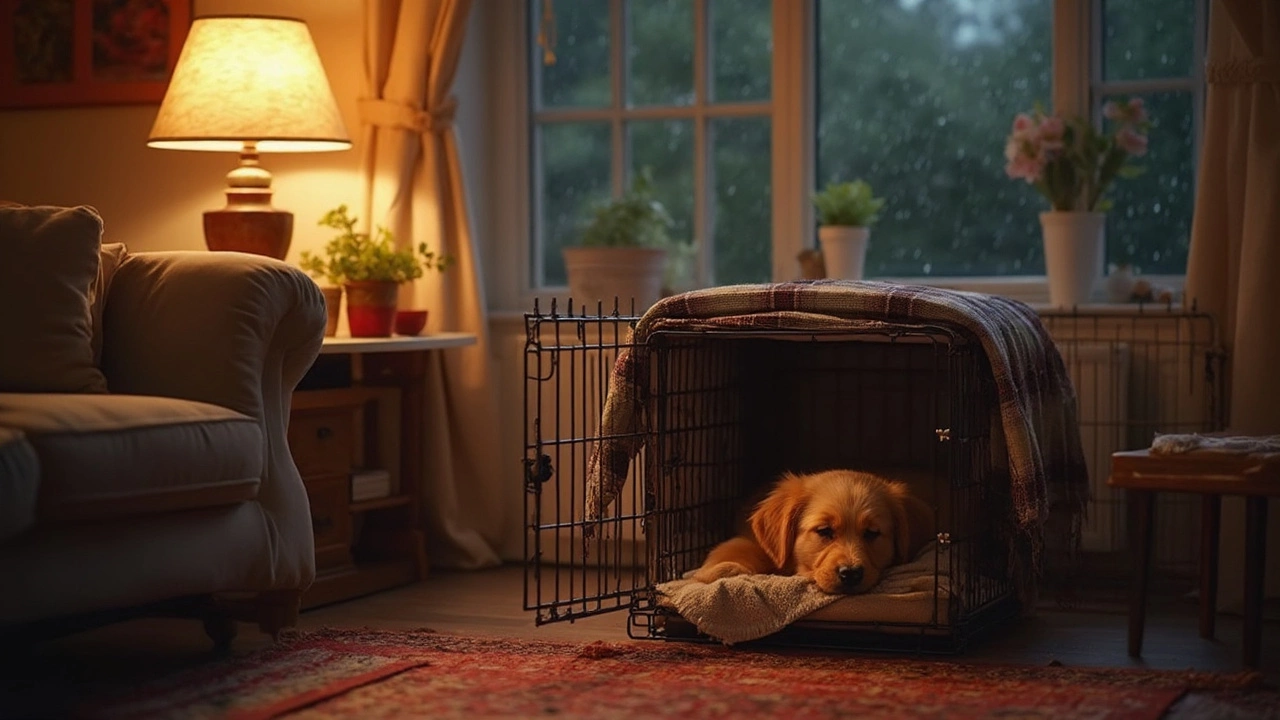Night Dog Care: Sleep Tips, Crate Training & Evening Routines
When the lights go out, many pet owners wonder how to keep their dogs comfortable and safe. Bad sleep habits can lead to barking, accidents, and stress for both you and your pup. Below you’ll find straight‑forward advice that works for most dogs, whether they sleep in a bed, a crate, or right beside you.
Where Should Your Dog Sleep?
First, decide on the spot. A dedicated dog bed works well for older dogs that like a firm surface. For puppies, a crate often provides the security they need. If you share a bed, make sure it’s a choice you’re comfortable with – dogs won’t disrupt your sleep if they have a clear cue that the bed is a shared space.
Look for a location that’s quiet, away from drafts, and easy to clean. A corner of the living room that’s out of foot traffic can be ideal. If you use a crate, place it near your bedroom so the pup can hear you, but not so close that you’re constantly disturbed.
Making Nighttime Calm and Safe
Start a simple bedtime routine. A short walk, a quick bathroom break, and some gentle petting signal that it’s time to settle down. Consistency tells your dog what to expect, and that reduces anxiety.
For crate training at night, follow the “5‑minute rule.” Let the puppy out for a quick bathroom break, then close the crate and stay calm. If they whine, wait a few minutes before opening the crate – this teaches them that quiet wins attention.
Give a low‑calorie snack like a small piece of plain pumpkin a couple of hours before bed. It helps digestion and can prevent the need for an early‑morning bathroom run. Avoid sugary treats right before sleep; they can make pups restless.
Lighting matters too. A dim night‑light helps dogs that are nervous about total darkness, but keep it low enough that it won’t keep them awake. If you use a white‑noise machine, set it to a soft hum to mask outside sounds.
Finally, check the temperature. Dogs tend to sleep best at 68‑72°F (20‑22°C). Too hot or too cold can cause restless nights and lead to health issues.
By picking the right sleep spot, keeping a calm bedtime routine, and paying attention to food, light, and temperature, you’ll give your dog a night that’s as restful as yours. A well‑rested pup means fewer midnight emergencies and a happier home for everyone.
Should I Cover My Puppies' Crate at Night? Real Answers for New Owners
Debating whether to cover your puppy’s crate at night? Discover the real reasons some owners (and puppies) rest easier with a cover and why it’s not a must for every pup. This article explains the science, perks, and practical tips behind crate covers. If you've googled late at night about whining pups or restless sleep, you’re in the right place. Get straight talk, not just generic advice.
